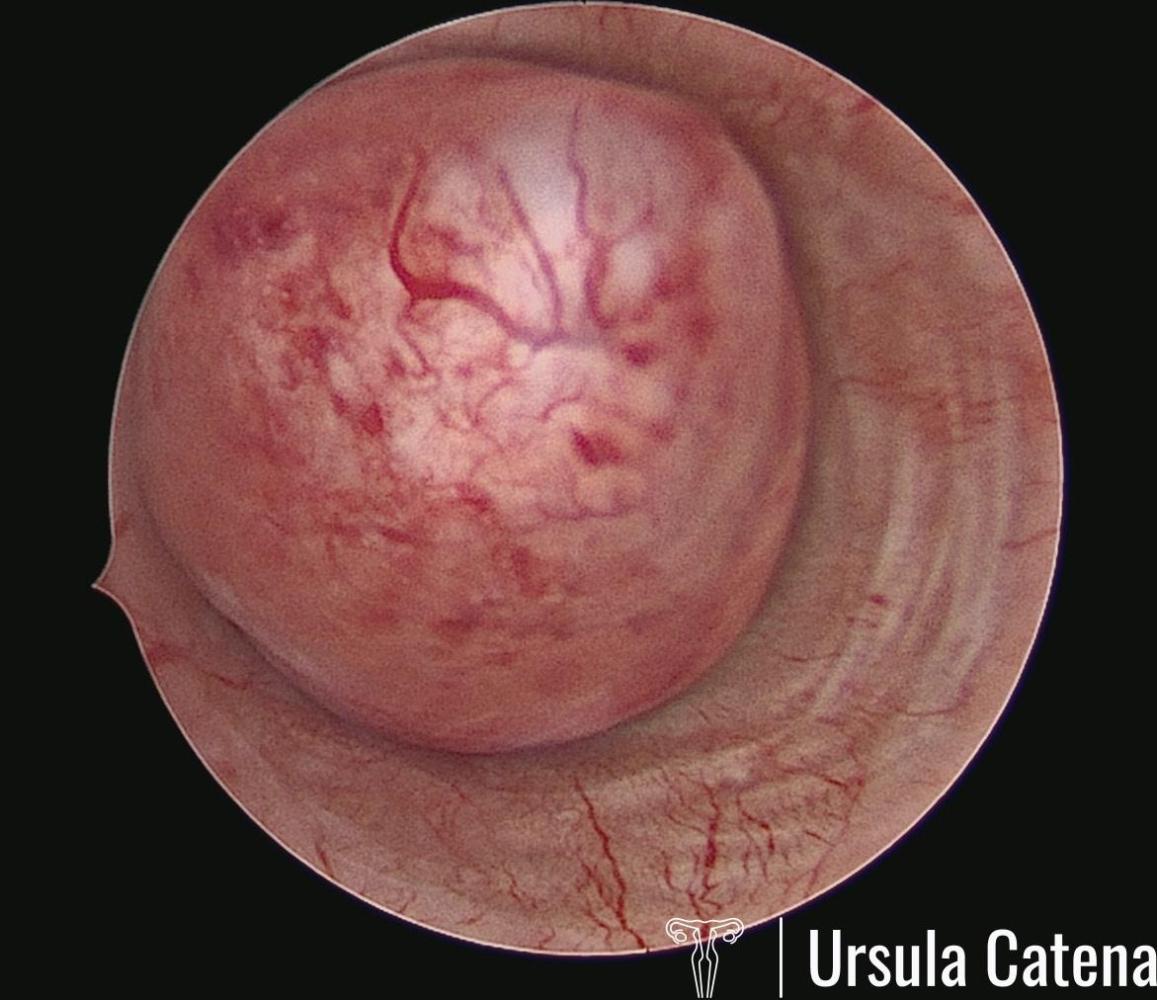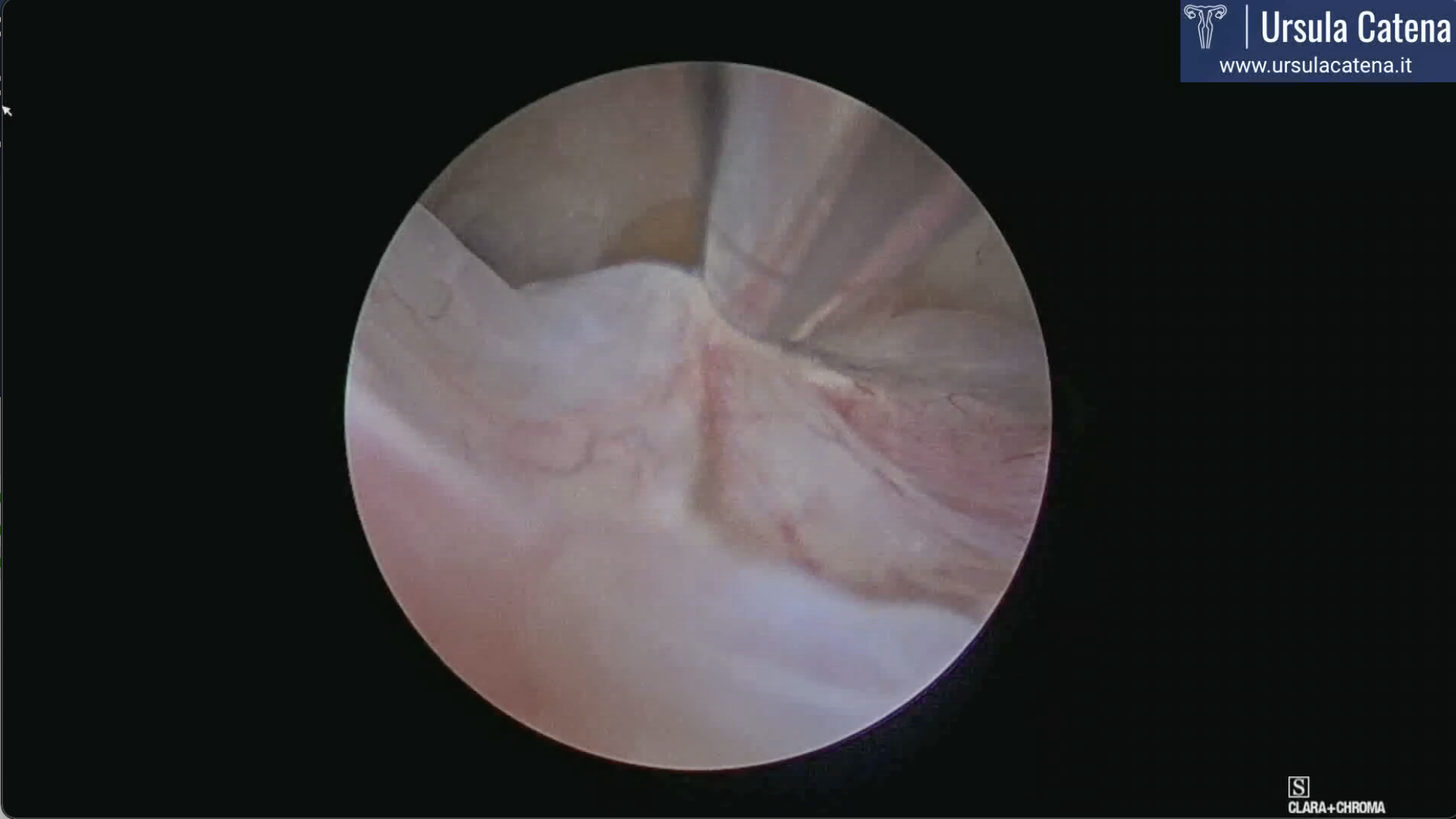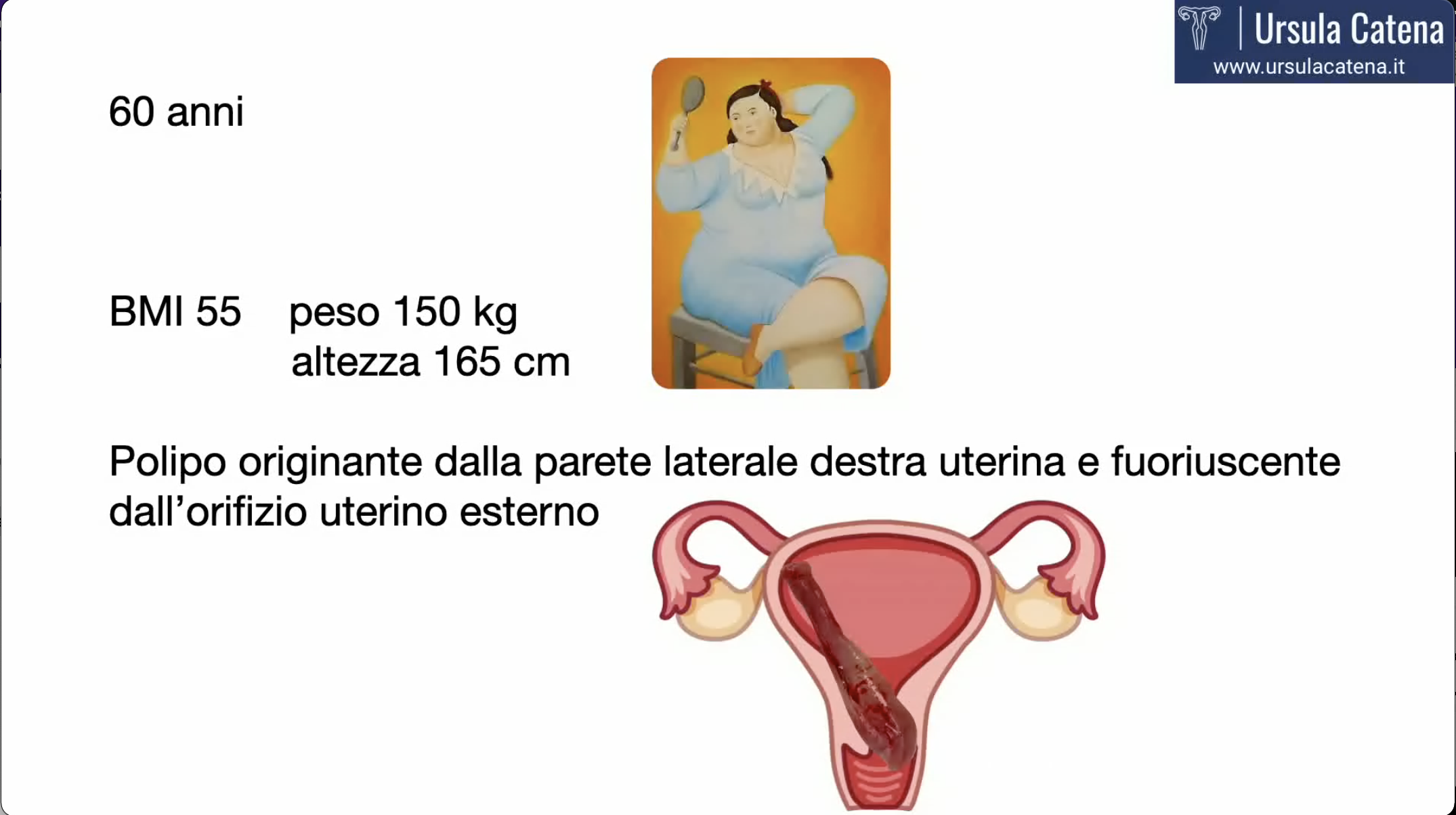Endometrial polyps are focal benign neoformations of the endometrial mucosa consisting of a stromal axis lined with cylindrical epithelium containing a variable amount of blood vessels.
About 20% of women are affected, particularly in the fifth decade of life.
Numerous causes associated with the appearance of endometrial polyps have been hypothesized; they include genetic and hereditary factors, inflammatory factors, endocrine factors, iatrogenic factors (unbalanced estrogen therapy, tamoxifen therapy for breast cancer).
Endometrial polyps can be completely asymptomatic and be diagnosed during a routine investigation (pelvic ultrasound) or associated with symptoms such as abnormal uterine bleeding and / or infertility.
Hysteroscopy allows an immediate diagnostic confirmation and provides the necessary informations to plan the correct therapeutic approach.
The endoscopic investigation of the endometrial polyps includes the evaluation of the following parameters: number, size, localization and relationships, consistency, characteristics of the implant base and of the lining mucosa, evaluation of the superficial vascularization, presence of concomitant other pathologies.
The rationale for removing endometrial polyps by hysteroscopy is twofold: the first reason is the resolution of the symptoms, the second is to be able to exclude with absolute certainty a possible neoplastic transformation.
The operator's experience, the absolute and relative dimensions (> 2 cm) and the location (fundic and / or cornual region) of the polyp are the main factors limiting the execution of an outpatient procedure without anesthesia. Since the procedure is performed at the same time as the diagnostic examination, it is imperative that the operation be performed, in women of childbearing age, in an early proliferative phase (immediately after the menstrual cycle). The presence of a thickened endometrium limits, in fact, the possibility of a complete removal of the lesion in a single surgical time.
As reported in the literature, hysteroscopic polypectomy represents an effective technique in resolving abnormal uterine bleeding associated with endometrial polyps.
Despite the lack of randomized studies in the literature, many observational studies have shown an increase in pregnancy rate after polypectomy.
Polypectomy can be performed in an outpatient setting, without anesthesia, in about 80% of cases. Obviously, patient's compliance must always be assessed during the procedure, which in any case can also be performed under sedation.
Polypectomy can be performed with different techniques: polypectomy with 4-5 mm miniaturized instruments with the aid of 5 Fr instruments (bipolar electrodes, scissors, forceps), polypectomy with 15 Fr bipolar miniresectoscope (5 mm), polypectomy with intrauterine morcellator.



























